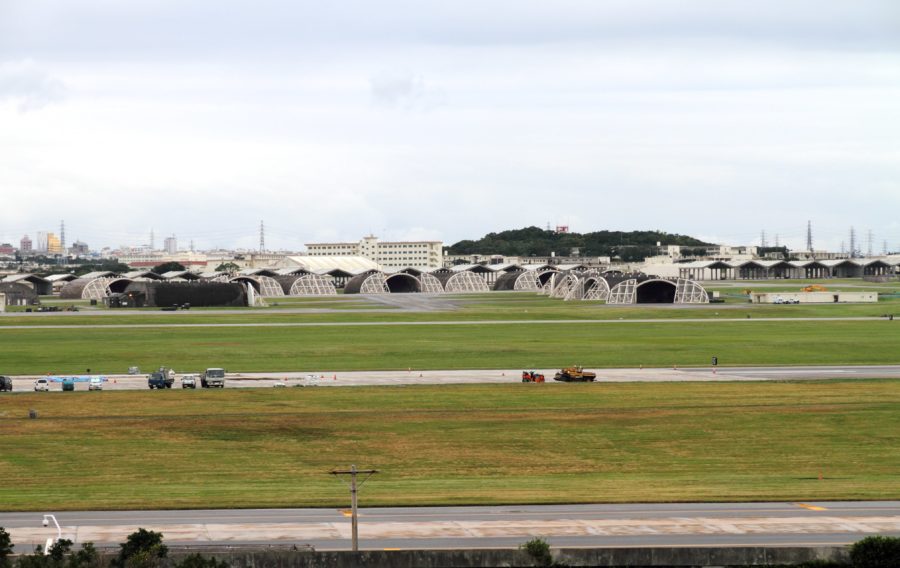
Defence Online takes a look at the measures the United States Department of Defense is taking to enhance its military infrastructure.
In recent years, the US military infrastructure has suffered from numerous issues. At present, the Pentagon owns property in all 50 US states as well as in 40 foreign countries. The US has committed to a bipartisan effort to improve the quality of military bases. The DOD owns and leases around 300,000 buildings worldwide valued at approximately $705billion. This property includes housing, medical, maintenance, training, troop accommodation, supply, research, and administrative. Most of this property forms part of the army and air force, with the Navy and Marine Corps owning the largest share of overseas structures. Recently, the DOD has revealed plans to expand its bases in Australia, the Middle East, and Europe.
The biggest issue facing the US military construction is the controversial decision by the Trump administration to use $3.6billion in funds intended for DOD infrastructure to build the border wall. This includes planned training facilities, schools, and a fire and rescue station. This comes after concern over the general state of infrastructure. The Pentagon has paused a total of 120 projects to put together the funding, in order to fund 175 miles of wall.
The planned 2,000-mile Southern border wall is estimated to end up costing between $10billion and $25billion. Despite a large budget for defence promised by the Pentagon, many US bases and housing facilities are reported to be struggling. Earlier this year, Congress requested $4.1billion to repair air force bases. The Air Force estimates a cost of $33billion to complete all current repairs and had to use $5billion to repair hurricane damage in Tyndall Airbase in Florida following Hurricane Michael last year. The Pentagon estimates a total of $116billion is needed for repairs and improvements throughout MOD property.
Last year, the Pentagon rated 30% of MOD property as ‘poor’ and even suggested some buildings were so degraded they were not worth saving. The US military budget often prioritises other areas of defence, with increasing budgets allocated for modern warfare and cybersecurity. It is also estimated that 21% of DOD infrastructure is ‘excess capacity’ and not crucial for the continued running of the armed forces. There hasn’t been as many incidences recently of the Army closing and selling unused property, meaning unused land is increasing and is becoming difficult to maintain.
Many US bases face an increased risk of natural disasters both in the US and overseas. Some have already been affected, including Tyndall Airbase. Hurricane Micheal last year damaged a huge number of buildings and made all the housing at the base uninhabitable. There is debate over whether the base should be abandoned, but some politicians have supported rebuilding. Future assessment of the damage will be needed to determine what will happen to the Florida base.
Many bases are at risk of flooding, a threat made worse by climate change. Recent flood damage at an airbase in Nebraska has led to a call for improved flood defences. Many naval bases are at risk due to their proximity to coastlines. The DOD estimates that 35 Air Force bases are also vulnerable to the effects of climate change and 20 current sites and 25 potential bases are at risk of flooding. In response to climate change, the US has begun to introduce renewable energy into some military posts. Strategies include the Tactical Garbage to Energy Refinery Programme, which recycles waste into fuel.
The system can convert 1 short ton of waste into 11 gallons of JP-8 fuel. The Net Zero programme aims to provide 30 US-based installations with the means to achieve net-zero carbon status by 2030. The programme has similar aims for waste and water usage. Task Force Energy, established by the Navy, aims to enable the armed forces to achieve climate goals, including reducing the use of non-tactical petroleum, using alternative sources for 50% of on-land energy, and ensuring 50% of Navy and Marine Corps installations achieve net-zero by 2020 through renewable energy.
Many residents of military bases in the US have complained of poor living conditions. Privatised housing has proved to be the biggest point of issue for members of the armed forces, with many complaining about mould and materials such as lead. The Army has pledged to hold housing companies accountable and improve the quality of housing. Senator Elizabeth Warren released a statement on recent findings of poor conditions in privatised housing promising to make changes. Along with Representative Deb Haaland, she introduced a bill in April of this year, the Military Housing Oversight and Service Member Protection Act, to improve housing. The bill includes measures to allow residents to register complaints more efficiently, such as being able to withhold rent until issues are fixed. It also details a database that should be set up to record complaints and an annual report submitted by landlords with all denied complaints.
The bill also demands that finances relating to military housing are made public. All complaints must be recorded by landlords who are obliged to respond to them. The bill also aims to improve medical coverage available to members of the armed forces. So far, the bill has not advanced from the introduction stage in congress. One private company with a US military contract, Corvias, has promised a new financing plan to improve its housing. Along with other companies, the firm is planning $325million in repairs to 16,000 homes across seven posts. The plan also aims to create savings through energy efficiency and lower maintenance costs thanks to stronger and longer-lasting construction.
Military bases are facing environmental problems overseas. The Pentagon reports 43 bases are in areas at risk of drought. As well as potentially causing problems within military posts, droughts and famines can worsen conflicts, as seen in Syria. Stability within military bases can have a positive effect on the surrounding community, but they can often cause conflict and escalate problems in the area. Bases in Iraq have been at the forefront of green technology initiatives, with alternative energy sources such as solar power.
Many international bases have also had their funding rerouted to finance a section of the border wall which will see a number of construction projects and repairs postponed in bases in Europe and Asia. The Overseas Base Realignment and Closure Coalition (OBRACC) is a bipartisan group that promotes overhaul and closure of international bases to save money and improve national security. The group cites the cost of running bases, advancements in technology rendering much of their function obsolete, environmental damage, increased conflict, and the distance personnel have to travel as reasons for closing overseas bases.
The group says that the construction of bases and a history of toxic waste and accidents mean that international bases can have a negative environmental impact. The group recommends increasing foreign diplomacy as an alternative to military instalments overseas. OBRACC says that closing overseas posts is cheaper and easier than closing domestic ones, and highlights how previous White House Administrations closed hundreds. They say the government must seek out alternatives to create global links and avoid aggression and military intervention.
If you would like to join our community and read more articles like this then please click here.
accommodation construction environment housing infrastructure US DoD US Government








